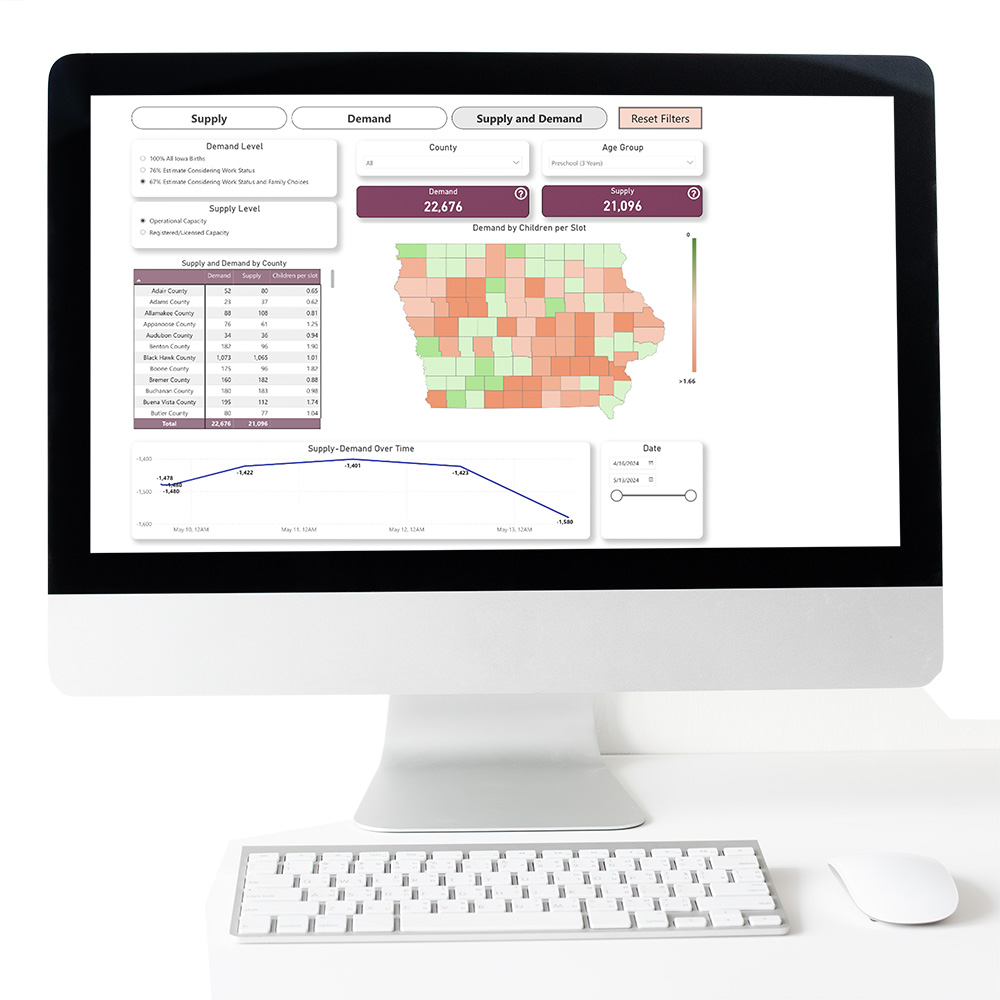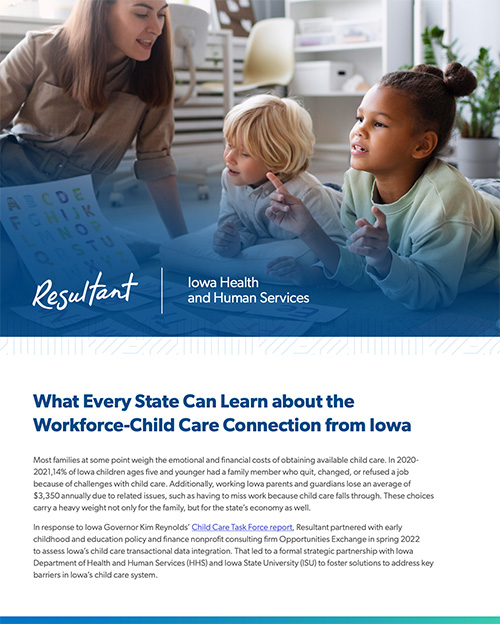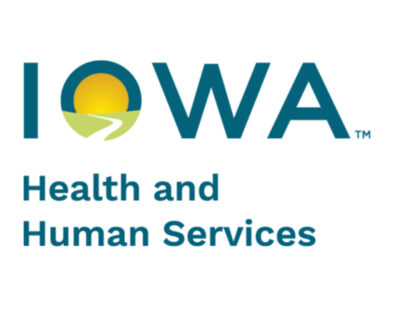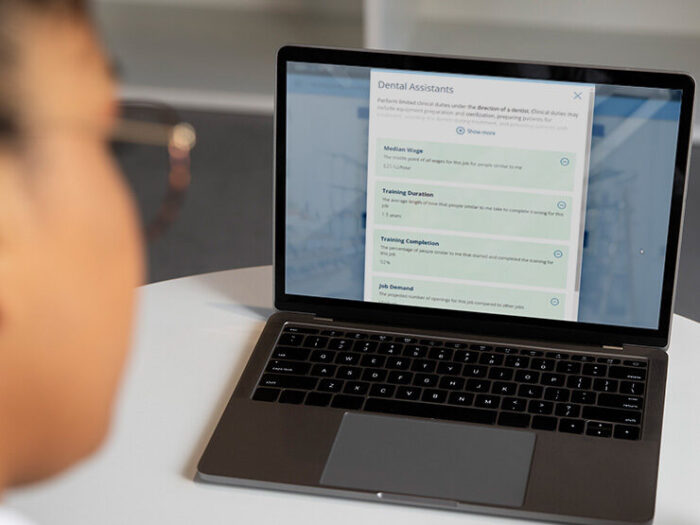What Every State Can Learn about the Workforce-Child Care Connection from Iowa
Share
In response to Iowa Governor Kim Reynolds’ Child Care Task Force report, Resultant partnered with early childhood and education policy and finance nonprofit consulting firm Opportunities Exchange in spring 2022 to assess Iowa’s child care transactional data integration.
Finding and filling the data gaps makes all the difference.

Why timely, accurate data matters in early learning.
Finding and filling the data gaps makes all the difference.






